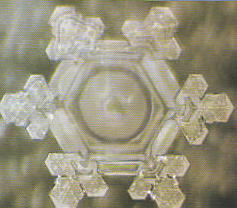Spirit
Daily
__________________________________________
Root Of Moral Decay Traced
To Hidden Effects Of Rock And Heavy-Metal Music
A few months ago we wrote about
the demonic root of much rock-and-roll music: the actual dark underpinning that
began with blues music in the South and progressed through the explosion of new
sounds in the Sixties and Seventies -- eventually reaching the extremes of rap
and heavy metal.
Behind the scenes, it was shown,
most major musicians in those "movements" were involved with occult-like
past-times or strange beliefs like UFOs, which we believe are a spiritual
deception.
The connections between rock and
the dark side -- and later offshoot music, such as "gothic," "industrial," and
"grunge" -- are legion. No doubt, musicians fall into traps as we all fall into
traps, thinking the dark side to be "cool" and even dabbling with black magic
along with drugs, which allow demonic infiltration.
See the Rolling Stones. See Ozzie
Osborne. See Led Zeppelin.
In some
cases, rock musicians have even used the pentagram or pronounced the name
of the devil.
"He was really into that stuff," one groupie
testified about a major rock guitarist. "I believe
he was very into black magic and probably did a lot of rituals, candles, batís
blood, the whole thing."
The point is that there is a
spirit -- a deceptive spirit -- behind much of today's music, and that
spirit has had vast repercussions.
To varying degrees -- in ways we
often don't recognize -- rock and other hard music has affected us all, says an
activist named Andrew Pudewa of California, leading in large part to the "dumbing-down"
of the West and by implication causing violence and other aberrant behavior
through effects that are subliminal as well as spiritual.
"In the 1970s there was a
researcher in Colorado named Dorothy Retallac who published a booklet about the
sound of music and plants and showed how plants respond positively to classics
and baroque music -- faring well and actually leaning toward the speakers,
growing toward the speakers when the music is classical, but react very badly --
don't root as deeply, don't produce the fruit, and lean away from the
speakers -- when exposed to the rock music of the 1970s," says Pudewa, a
home-schooling father of seven who currently serves as director of the Institute
for Excellence in Writing and has produced an enthralling audio presentation
called The Profound Effects of Music on Living Things.
In the
1980s, notes Pudewa, another researcher named Harvey Bird studied the
brain cells of mice that were exposed to certain kinds of music and found that
classical sounds such as a waltz caused rodent brain cells to be more
"organized" and "connected" while a voodoo drumbeat caused "a pathological
growth pattern." The voodoo beat is at the origin of early blues music -- which
inspired much of rock and roll.
Played such music all day long,
the mice, says Pudewa, would "start to attack and cannibalize each other."
In 1997, a high school student
who later won the state fair for his research exposed one group of mice to
Mozart, another to a heavy-metal group called Anthrax, notes Pudewa -- and found
that mice listening to Mozart were able to greatly improve how quickly they
found their way through a maze -- lowering their time from ten minutes to under
two -- while those played heavy-metal music from an especially harsh group aptly
named "Anthrax" went from taking ten minutes to get through a maze to thirty
-- in addition to killing each other, when the music was played all day
long.
They were confused. They were
dumbed down. Their mental abilities decreased dramatically.
Art is supposed to imitate
nature, says Pudewa -- it is supposed to have a good spiritual underpinning --
and when it does not, there is chaos. It was Thomas Aquinas who said that the
Bible was the second Gospel -- that nature is the first.
 A
while back, we carried an article about a researcher in Japan who has
photographs showing that various moods and spiritual settings apparently affect
the formation of ice crystals. The researcher, Dr. Masaru Emoto, claims to have
seen astounding results -- crystals that are beautifully formed when they have
been in the presence of classical music or the sounds of praying and ugly,
malformed, and unformed structures when tension was expressed in the room during
crystal formation or there was heavy-metal music.
A
while back, we carried an article about a researcher in Japan who has
photographs showing that various moods and spiritual settings apparently affect
the formation of ice crystals. The researcher, Dr. Masaru Emoto, claims to have
seen astounding results -- crystals that are beautifully formed when they have
been in the presence of classical music or the sounds of praying and ugly,
malformed, and unformed structures when tension was expressed in the room during
crystal formation or there was heavy-metal music.
Emoto claims that Beethoven's
Pastoral Symphony resulted in "beautiful and well-formed crystals" and that the
same was true of Mozart -- while rock jangled water as much as it jangles our
ears.
All matter, argues Emoto, is
energy vibrating at the atomic level. It is at that threshold that there is the
spiritual dimension, he asserts. Does our environment affect us far beyond the
physical?
"All the classical music that we
exposed the water to resulted in well-formed crystals with distinct
characteristics," the Japanese researcher said. "In contrast, the water exposed
to violent heavy-metal music resulted in fragmented and malformed crystals at
best."
The same
happens, it appears, to functions in the brain.
Is this at least partly
responsible for the dramatic lessening of school test scores, the deterioration
of attention spans, and the epidemic need for new psychological medication?
Has it affected our health?

And spiritually, what has come
off such music that so often evokes demonology? What now hovers around our
youth? Was it a coincidence that heavy-metal music was prominent in the lives of
those kids who killed at Columbine?
"Rhythmic
dominant music stimulates the physical body, whereas melodic dominant
music connects to the mind and harmonic dominant music opens up the emotions,"
writes Pudewa. "Most popular, classic rock, alternative, and even a lot of
contemporary Christian music is rhythmic dominant, with repetitive patterns and
narrow melodic variation. Popular music, even folk music, tends to be repetitive
and narrow so that it is easy to sing with or dance to.
"Unfortunately, persistent
syncopated music (with the accent on the off-beat) is not natural, and the
mammalian body -- which has a rhythmic heartbeat and pulse -- perceives this
persistent syncopation as an attack, and responds with a release of adrenaline
and endorphins.
"Our hearts are beating
ONE-two-three, ONE-two-three -- but when we listen to music with a stopped
anapestic beat, one-two-THREE, one-two-THREE, it creates tension.
"When used occasionally for a
short time as was done during the classical and romantic periods, this creates
excitement and tension in music, but when used continually, as is the case with
most all popular music, it creates a persistent stress, and the body reacts
accordingly. Most definitely it is an unnatural condition, clearly exemplified
by the neurological damage suffered by the rodents in the maze experiments."
Why do kids listen to such harsh
sounds?
The
endorphins and adrenalin are like drugs, says Pudewa; they are physically
addictive.
The devil has hooked us many
ways.
He opens us up spiritually with
the early melodic sounds of rock music (see The Beatles), but then slams with
the harsh beat and jangled music and seductive lyrics once the soul is open, he
says.
Melodies morph into disturbing,
louder, rhythmic, and disordered music.
The result is all around us.
In 1925 -- during the "Roaring
Twenties" (which also produced cinema) -- mass- produced electronic recording
changed our entire relationship with music, as people went from being music
producers -- singing for themselves -- to a society of music consumers -- soon
to find little control over the music they heard, and more so today than ever,
whether it is music we encounter while waiting on a phone, eating out, shopping,
watching the news, or riding up an elevator.
The rhythm and syncopation have
led, says the researcher, to seduction, sensual emotions, and sexual energy.
Today, says Pudewa, there are Catholic singers who sound like they are singing
to a girlfriend or boyfriend instead of God.
"The disordered form violates
natural law and therefore spiritual law," says Pudewa. "And this is disturbing
-- especially a drumbeat -- during the liturgy."
"I believe
the decline of spiritual sensitivity that allows perversion and abortion
to continue is a result of the spiritual widening of souls by our media, and the
number one change in the media is music," he theorizes. "The sounds we hear are
objectively ugly. They are unpredictable and chaotic. This even goes for jazz.
Nature has a perfect balance between infinite complexity and variety and
structure.
"I propose that the purpose of
art is to bring the mind of man closer to the Mind of God, which, when seen in
nature, is the perfect blending of infinite variety within perfect structure,"
he adds. "Every oak leaf, rose petal, snowflake, or human face is perfect in
structure, but differs in some way.
"From the smallest cell to vast
galaxies, natural creation demonstrates unlimited complexity within consistent
structure.
"When art seeks to imitate this
balance of structure and complexity, it brings us closer to the Mind of God;
when art intentionally diverges from this balance -- either towards chaos or
monotony -- it has the potential to draw us away from God's nature.
"Surely,
the spiritual sensitivity of the people of this nation has been
profoundly undermined, and we cannot discount the very real likelihood that the
music of the day has had a significant, even dominant, impact on this decline.
"If our children are to reclaim
this country for Christ, they must reclaim the culture -- of which music is an
essential part.
"We must pray and consider the
role of music in worship. Is it right to use intrinsically disordered
(persistent syncopated rhythmic dominant) music in a place where our goal is to
become more in tune with spiritual truth?"
Good question. Good question to
pose, respectfully, but especially, to those who serve as pastors.
[resources: Andrew Pudewa's
website]
9/13/07
Return to Spiritdaily.com
Return
to archive page
You are at
www.spiritdaily.org
 A
while back, we carried an article about a researcher in Japan who has
photographs showing that various moods and spiritual settings apparently affect
the formation of ice crystals. The researcher, Dr. Masaru Emoto, claims to have
seen astounding results -- crystals that are beautifully formed when they have
been in the presence of classical music or the sounds of praying and ugly,
malformed, and unformed structures when tension was expressed in the room during
crystal formation or there was heavy-metal music.
A
while back, we carried an article about a researcher in Japan who has
photographs showing that various moods and spiritual settings apparently affect
the formation of ice crystals. The researcher, Dr. Masaru Emoto, claims to have
seen astounding results -- crystals that are beautifully formed when they have
been in the presence of classical music or the sounds of praying and ugly,
malformed, and unformed structures when tension was expressed in the room during
crystal formation or there was heavy-metal music.